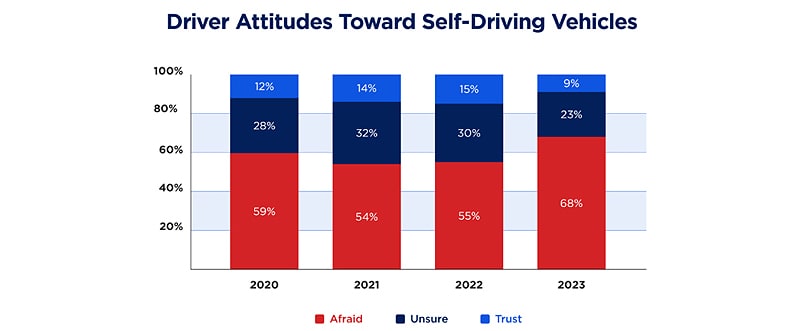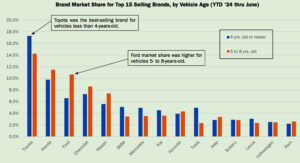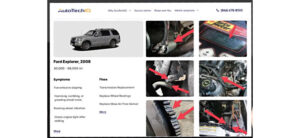The unexpected and dramatic drop in public trust for self-driving cars is the biggest since 2020
Orlando, Fla.—The results of AAA’s annual automated vehicle survey show that while there is still a high level of interest in partially-automated vehicle technology, attitudes toward fully self-driving vehicles have become increasingly apprehensive. This year there was a major increase in drivers who are “afraid,” rising to 68% as compared to 55% in 2022. This is a 13% jump from last year’s survey and the biggest increase since 2020.
AAA stated automakers must be diligent in creating an environment that promotes the use of more advanced vehicle technologies in a secure, reliable, and educational manner. This includes the consistent naming of vehicle systems available to consumers today.
“We were not expecting such a dramatic decline in trust from previous years,” said Greg Brannon, director of automotive research for AAA. “Although with the number of high-profile crashes that have occurred from over-reliance on current vehicle technologies, this isn’t entirely surprising.”
Even with advancements made in recent years, these findings suggest improvements are still needed to build public trust and knowledge surrounding emerging vehicle technology. There is also a need to dispel confusion around automated vehicles. AAA’s survey found that nearly one in 10 drivers believe they can buy a vehicle that drives itself while they sleep. Currently, there is no such vehicle available for purchase by the public that would allow someone to fully disengage from the task of driving.
This perception could stem from misleading or confusing names of vehicle systems that are on the market. AAA found that 22% of Americans expect driver support systems, with names like Autopilot, ProPILOT, or Pilot Assist, to have the ability to drive the car by itself without any supervision, indicating a gap in consumer understanding.
What are Advanced Driver Assistance Systems (ADAS)?
Consumers aren’t entirely opposed to advanced vehicle technology. In fact, six in 10 U.S. drivers would “definitely” or “probably” want these systems in their next car purchase.
- Examples of ADAS include blind spot warning, adaptive cruise control and automatic emergency braking.
- Active driving assistance (ADA) is also considered ADAS, however, it differs in functionality from other systems. ADA combines braking, accelerating, and steering through a combined use of adaptive cruise control and lane keeping assistance. This technology actively assists the driver versus other ADAS that only turns on when needed. ADA is also the only ADAS classified as Level 2 automation as defined by the Society of Automotive Engineers.
What is a fully self-driving vehicle?
A fully self-driving vehicle is capable of operating without human involvement. A human driver is not required to control the vehicle at any time, nor required to be present in the vehicle while moving. These vehicles are not available for purchase by consumers and are classified as Level 5 automation as defined by the SAE.







Comments are closed.